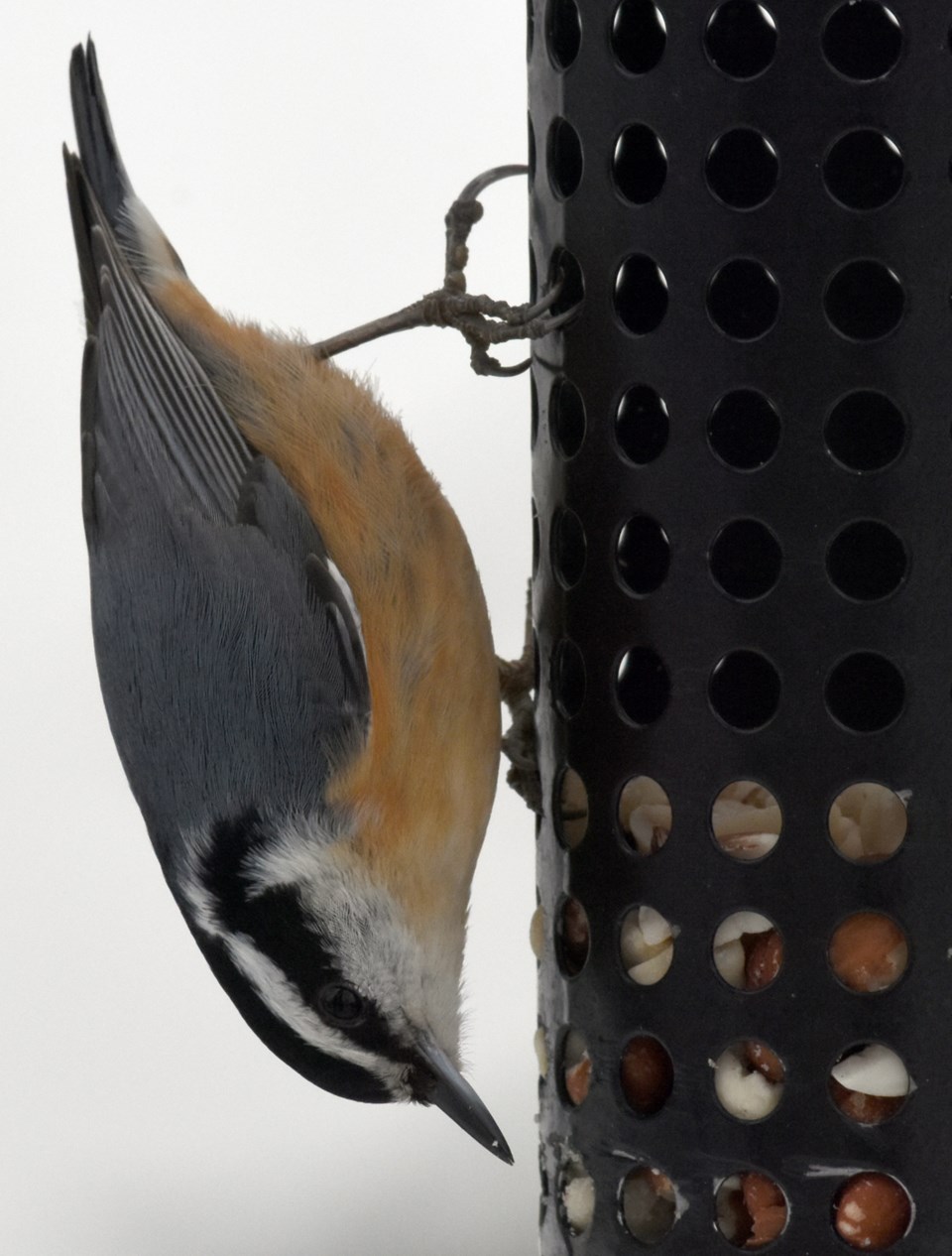In all my years of bird watching one species always came out on top as the “cutest darn thing you ever did see” and that was the black-capped chickadee.
Active, inquisitive, bold and often enticed to land on one’s hand or hat for an offered sunflower seed, this bird easily endeared itself to bird admirers of all ages.
However, the chickadee’s status of being on top of the cuteness list now has a serious challenger. Once considered a bit of a rarity around our neck of the woods, the red-breasted nuthatch is currently doing a Taylor Swift roll out of abundance and ‘hey, look at me.’
The woodlands of Simcoe County have always had a good representation of the white-breasted nuthatch, a bird that often frequented suet blocks and feeding stations in both rural and urban settings.
This dapper looking bird still catches my attention with its wind-up toy movements of coming down a tree trunk head-first, and continues to be a constant patron of our bird feeders. But its cousin is making the move to also become a permanent line on local bird checklists.
Both the white-breasted and the red-breasted nuthatches share a common trait in that they can descend a tree trunk head down, inspecting every crevice in the rough bark of our maples, oaks and ash trees. They have a very long rear toe and curved claw that hooks them in place so they can walk down the tree as if defying gravity.
Once upon a relatively recent time, the red-breasted nuthatch was considered an uncommon species that was occasionally seen around here on its autumn migration. In the 1967 book Birds of Simcoe County by O.E. Devitt, this bird is described as being a “rather rare summer resident; uncommon winter resident.” So yes, they were around but to see one was a highlight of your outing.
Around 1980 there was a bit of an uptick to their population and this species started to appear regularly on winter bird counts and summer nesting studies. Not common like robins, but a marked probability of finding at least one to fill your field trip checklist.
About this time our friends Ernest and Sandra Somers, a wildlife artist and nature photographer duo, invited us over to their home in Horseshoe Valley. While walking up to their door a strikingly-marked male red-breasted nuthatch plunked onto a tree truck right beside the walkway. At that time, it had been a few years since my last sighting of this species.
Our hosts explained this bird was a regular visitor to their feeders, and with the Copeland Forest being their backyard, felt many more were probably nearby. While that particular visit was spent with my nose looking out their window (I was and remain rather uncouth in my social visiting protocols), a return visit was set up when I could bring my photography equipment.
Jump ahead 40 years and the red-breasted nuthatch is not only a common daily visitor to our feeders, but it has started to endear itself to me. Just as the chickadees always swarmed the seed bucket as the feeders were being topped up, now the red-breasted nuthatch mingles in and stays put on the eye-level peanut feeder, just inches from my face (or several centimetres, if you so choose).
How cute is that, eh?
Behavioural studies have revealed that this nuthatch can speak ‘chickadee’ and will follow the verbal clues that proclaim “food is found over here” and the all-important “sharp-shinned hawk at 12 o’clock high.” Apparently this allows the nuthatch to spend more time foraging and less time wondering about the whereabouts of a local predator.
There are times when a sleeping owl will be detected by blue jays and chickadees, and payback time is played out like a short-term rental party ... lots of loud and very annoying hoopla to disrupt the snoozing owl! And nowadays the red-breasted nuthatch is being observed to be part of this noisy entourage, assisting the chickadees with the bullying of this potential predator.
Of course as soon as the owl wakes up and casts a baleful glace at his tormentors, everyone disperses and retreats back to the shelter of the nearby cedars and spruce.
I am hoping to find and confirm the breeding site of a red-breasted nuthatch on our farm, perhaps over the coming spring and summer. They live in old and now vacant woodpecker holes, fumigating the nesting cavity by bringing in bits of tree resin; the female does the interior and the male swabs the edges of the entrance hole. Rather interesting behaviour, I think.
And so, like the cardinal, this species has now become a common bird to be seen around your backyard, especially if you have mature trees with lots of cracks and crevices in the bark. Watch them closely and see if you can pick a winner for the Cutest Bird at the Feeder.
